Snakes have long captivated human fascination with their mysterious and often misunderstood behaviors, particularly when it comes to their feeding habits. These remarkable reptiles have evolved extraordinary methods for capturing, subduing, and consuming prey that can seem almost otherworldly to observers. Thanks to modern technology and dedicated wildlife photographers, some of the most unusual snake feeding behaviors have been documented on camera, providing unprecedented insights into the serpentine world. From incredible ambush techniques to jaw-dropping prey selection, these cold-blooded predators demonstrate nature’s ingenuity in ways that both terrify and amaze. Let’s slither into the strange world of snake feeding behaviors that have been captured for all to witness.
The Infamous “Death Roll” of the Water Snake
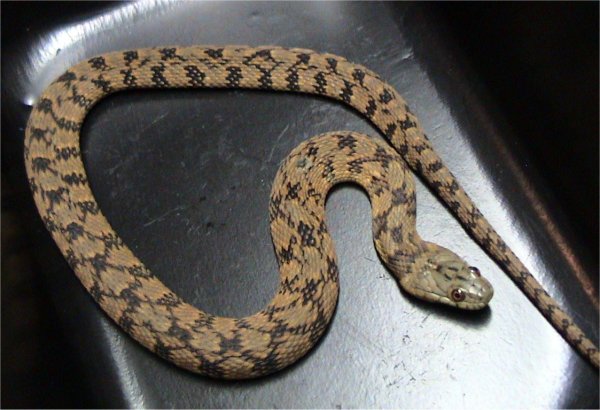
While crocodilians are famous for their death roll technique, certain water snake species have been documented performing a similar spinning maneuver when subduing fish and amphibian prey underwater. Video footage captured by underwater photographers shows North American water snakes (Nerodia spp.) rotating rapidly along their longitudinal axis while gripping fish, effectively disorienting and overwhelming their prey. This spinning technique helps the snake tear manageable pieces from larger fish when their jaws alone might struggle with the size. The behavior appears most commonly when the snake has captured particularly slippery or vigorous prey that might otherwise escape their grasp. Researchers believe this adaptation helps these non-venomous snakes compensate for their lack of venom or constriction abilities when hunting in aquatic environments.
The Egg-Eating Snake’s Remarkable Skeleton Contortion

African egg-eating snakes (Dasypeltis spp.) demonstrate one of the most specialized feeding adaptations ever filmed in reptiles. These remarkable serpents have evolved to consume eggs several times larger than their own head diameter, a process captured in astonishing detail by wildlife documentarians. After swallowing an egg whole, the snake activates specialized vertebral processes that extend into the esophagus, effectively creating an internal “egg cracker” that punctures and collapses the shell. High-speed photography reveals how the snake’s muscles contract in rhythmic waves, directing the nutritious contents toward the stomach while the shell itself is compacted. In the final remarkable stage of this process, the snake regurgitates the completely crushed, empty eggshell, having extracted every bit of nutritional value without swallowing a single shell fragment.
Tentacled Snakes’ Underwater C-Strike Illusion
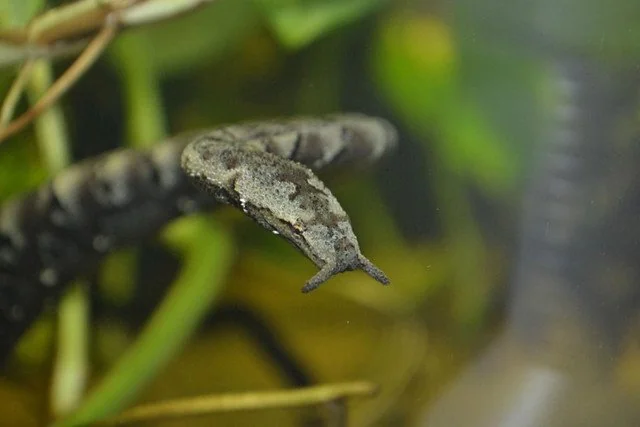
The aquatic tentacled snake (Erpeton tentaculatum) from Southeast Asia employs perhaps the most sophisticated hunting technique ever documented in serpents. Underwater cameras have captured these masters of deception creating what scientists call a “C-strike illusion.” The snake positions its body in a distinctive J-shape and waits motionless for fish to approach. When a fish comes within striking range, the snake doesn’t lunge directly at the prey but instead twitches muscles on the opposite side of its body. This counterintuitive movement creates a pressure wave that triggers the fish’s instinctive escape response, causing it to flee directly into the snake’s waiting jaws. Remarkably, the snake anticipates exactly where the fish will be milliseconds later, striking at empty water that will contain the fish’s head by the time its jaws close. This hunting method demonstrates a sophisticated understanding of prey neurology and fluid dynamics that has evolved over millions of years.
The Flying Snake’s Mid-Air Meal Capture
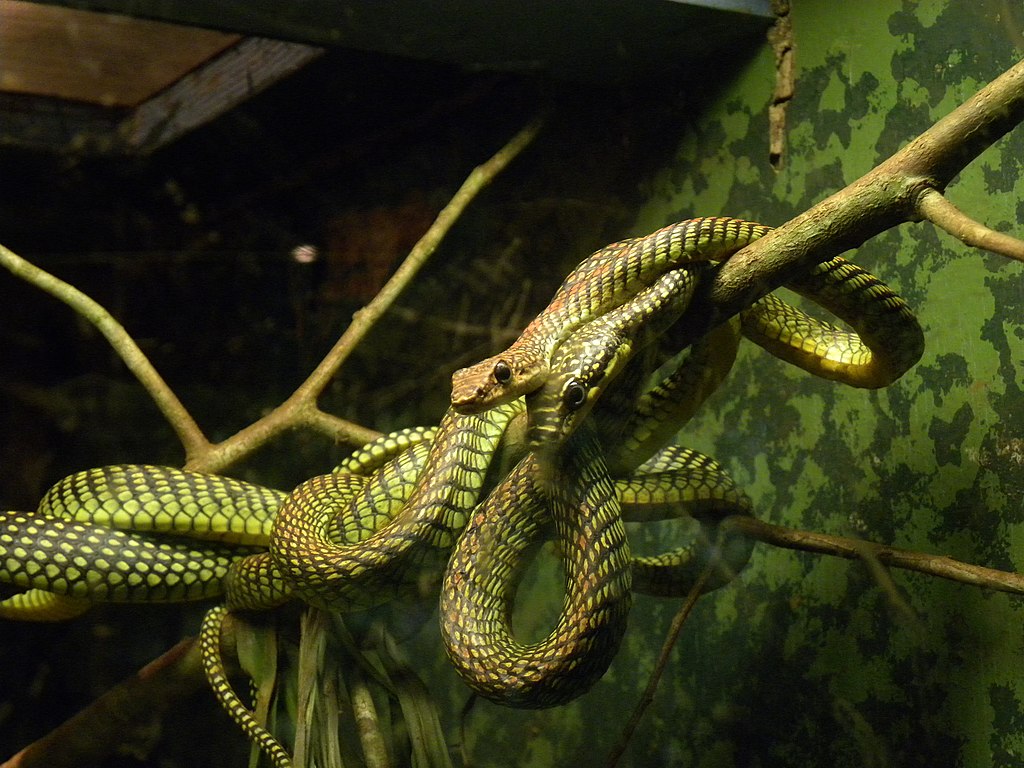
Paradise flying snakes (Chrysopelea paradisi) have been filmed achieving what seems impossible: capturing prey while gliding through the air. These remarkable reptiles, native to Southeast Asian forests, can flatten their bodies and make undulating movements that allow them to glide impressive distances between trees. Trail cameras and drone footage have documented these aerial hunters intercepting birds and lizards mid-flight, a behavior previously thought to be impossible for a limbless predator. After launching from a higher branch, the flying snake can adjust its trajectory with subtle body movements to intercept prey on adjacent trees or even in mid-air. Once contact is made, the snake quickly coils around its victim, using its momentum and body weight to subdue the prey even before landing. This extraordinary hunting method combines precision aerial navigation with split-second predatory timing that defies our expectations of snake capabilities.
The Cannibal King Cobra’s Ophiophagous Appetite
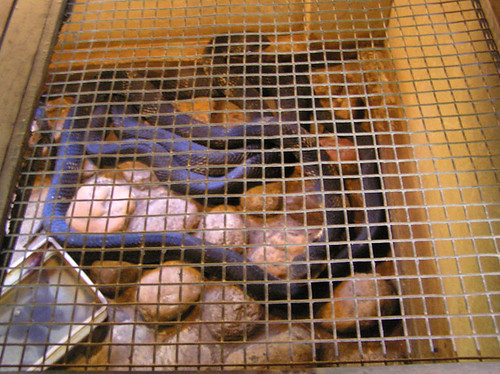
The king cobra (Ophiophagus hannah) earns its name through its preference for eating other snakes, a behavior known as ophiophagy that has been documented in chilling detail. Wildlife photographer Elliot Neep captured remarkable footage of a 13-foot king cobra stalking, overpowering, and consuming a 10-foot reticulated python in the jungles of Malaysia. The footage reveals how the king cobra uses its superior speed and agility to outmaneuver the larger python, delivering precisely targeted venomous bites to immobilize its serpentine prey. What makes this behavior particularly remarkable is the king cobra’s ability to distinguish between venomous and non-venomous snake species, often targeting the latter to minimize risk during these confrontations. After subduing its ophidian meal, the king cobra demonstrates extraordinary jaw flexibility, swallowing the python headfirst in a process that can take several hours to complete.
Sidewinder Rattlesnakes’ Battering Ram Technique
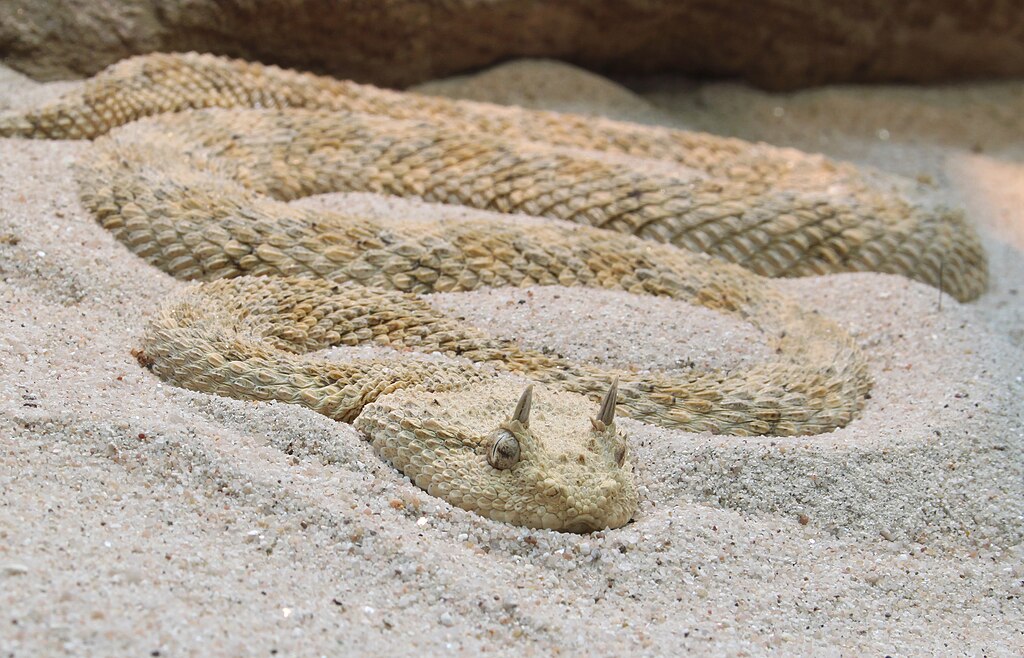
Sidewinder rattlesnakes (Crotalus cerastes) inhabiting North American deserts have been filmed employing a rarely observed “battering ram” technique to capture particularly dangerous prey. When hunting desert scorpions, these specialized rattlesnakes have been documented using the weight and momentum of their bodies rather than their vulnerable faces to incapacitate these venomous arthropods. Thermal imaging cameras reveal how the sidewinder launches the middle portion of its body at high speed, slamming into the scorpion with enough force to stun or injure it before the arachnid can deploy its venomous stinger. This behavior minimizes the snake’s exposure to potential injury while effectively neutralizing dangerous prey. Following this initial impact, the sidewinder quickly repositions to deliver a precise venomous bite, demonstrating a sophisticated multi-stage hunting strategy evolved specifically for handling hazardous prey items.
The Sea Snake’s Cooperative Hunting Alliance
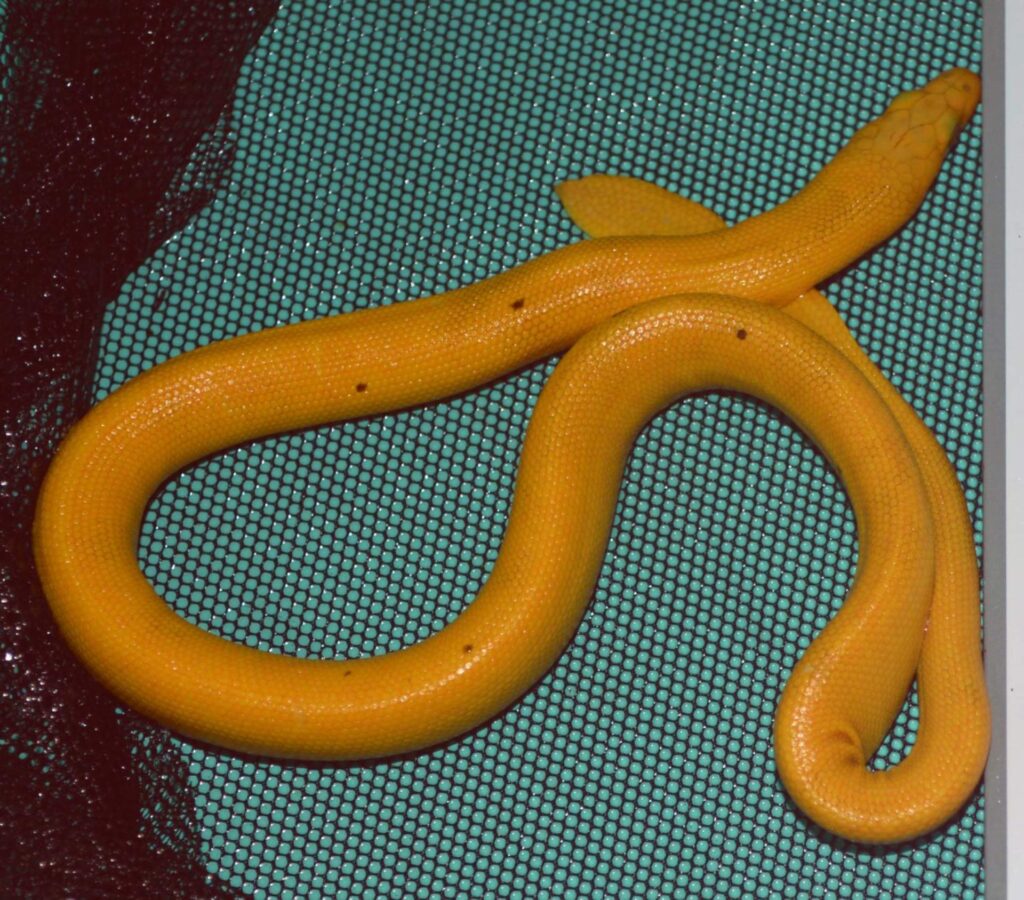
Marine biologists in Australia’s Great Barrier Reef have captured extraordinary footage of yellow sea snakes (Hydrophis major) engaging in coordinated hunting behavior with goatfish, creating an unlikely interspecies hunting alliance. The documented behavior shows sea snakes swimming alongside certain species of goatfish, which use their barbels to probe coral crevices for hidden prey. When small fish or crustaceans flee the probing goatfish, they often swim directly into the waiting jaws of the sea snake partner. This remarkable cooperation doesn’t appear to benefit the goatfish directly, suggesting the fish have simply adapted to the snake’s presence rather than forming a true mutualistic relationship. Underwater time-lapse photography reveals that these hunting partnerships can persist for several hours, with snakes actively following specific individual goatfish that have proven to be particularly effective at flushing out prey.
The Hognose Snake’s Death-Feigning Dinner Trap

Eastern hognose snakes (Heterodon platirhinos) have been documented using an elaborate multi-stage deception strategy that culminates in a surprise attack from an apparent state of death. Wildlife videographers have captured the complete sequence, beginning with the snake’s infamous threat display of flattening its neck and hissing loudly when it detects potential prey nearby. If this intimidation fails to provoke the desired reaction, the snake dramatically rolls onto its back, tongue lolling, appearing completely dead—complete with releasing a foul-smelling musk from its cloaca to enhance the illusion. When curious prey animals approach to investigate the seemingly dead snake, the hognose explosively “resurrects,” striking with remarkable speed to capture the surprised victim. This elaborate behavioral sequence represents one of the most complex hunting strategies observed in any snake species, combining elements of intimidation, deception, and ambush in a single feeding attempt.
The Blind Snake’s Subterranean Mass Feeding Frenzy
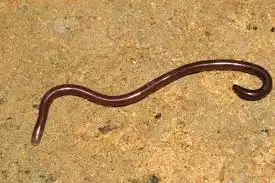
Specialized underground cameras have revealed the previously unknown mass feeding behavior of Brahminy blind snakes (Indotyphlops braminus), one of the world’s smallest snake species at just 6-8 inches long. These diminutive, worm-like reptiles have been filmed engaging in communal feeding frenzies when they encounter ant or termite nurseries in underground chambers. Dozens of blind snakes converge simultaneously, each targeting the helpless larvae and pupae in a coordinated assault that overwhelms the defensive capabilities of the insect colony. Using specialized jaw structures, the blind snakes extract nutritional fluids from their prey without consuming the exoskeletons, allowing them to process large numbers of victims efficiently. Time-lapse photography reveals that these feeding aggregations follow predictable cycles tied to the reproductive patterns of their ant and termite prey, demonstrating sophisticated temporal awareness in these primitive-appearing serpents.
The Wolf Snake’s Mirror-Image Hunting Technique
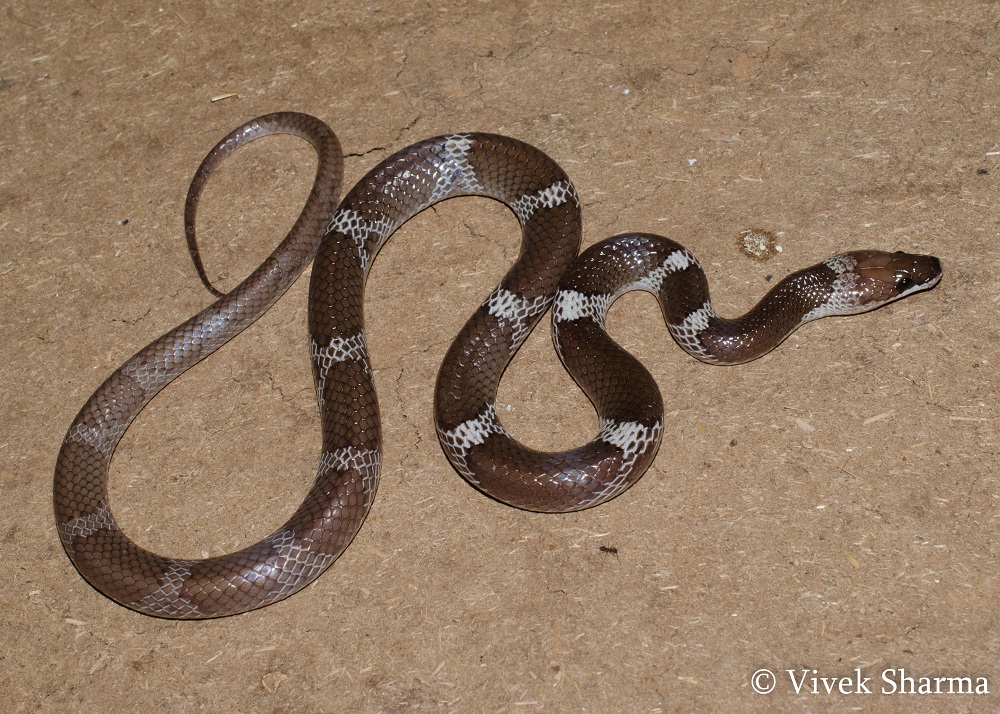
Indian wolf snakes (Lycodon aulicus) have been documented using one of the most unusual hunting techniques in the serpent world—exploiting their remarkable resemblance to venomous kraits to induce panic in prey animals. Trail camera footage from South Asian forests shows wolf snakes deliberately mimicking not just the appearance but the distinctive movement patterns of the deadly common krait. The wolf snake approaches small mammal burrows exhibiting the jerky, stiff-bodied crawl characteristic of kraits, triggering instinctive fear responses in rodents and other potential prey. When the terrified animals flee their burrows in panic, they expose themselves to the waiting wolf snake, which, despite being non-venomous, strikes with remarkable precision. This sophisticated form of aggressive mimicry represents an evolutionary arms race between predator and prey, with the wolf snake capitalizing on innate fear responses that would normally protect potential prey from genuinely dangerous serpents.
The Arboreal Vine Snake’s Precision Targeting System
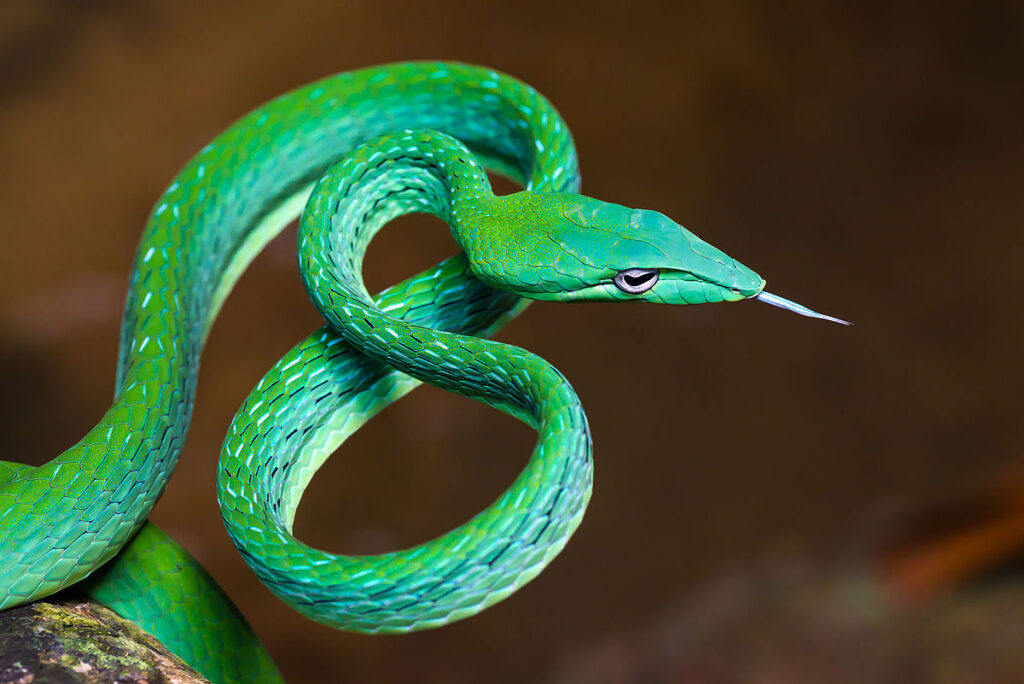
Asian vine snakes (Ahaetulla prasina) demonstrate perhaps the most precise hunting technique ever documented in reptiles, captured in stunning slow-motion by wildlife cinematographers. These slender, arboreal hunters possess extraordinary binocular vision thanks to their keyhole-shaped pupils, allowing them depth perception capabilities unmatched in the snake world. High-speed cameras reveal how vine snakes calculate the exact distance to prey items like lizards or frogs, then launch their strike with surgical precision, often aiming for specific anatomical targets like the neck or skull base. What makes this behavior particularly remarkable is the vine snake’s ability to strike proportionally to the prey’s size, using minimal force for small prey and maximum power for larger targets. After delivering a precisely placed bite, the vine snake maintains its hold while specialized rear fangs slowly deliver venom, demonstrating a complete hunting package that combines visual acuity, biomechanical precision, and chemical weaponry.
The Future of Snake Feeding Documentation
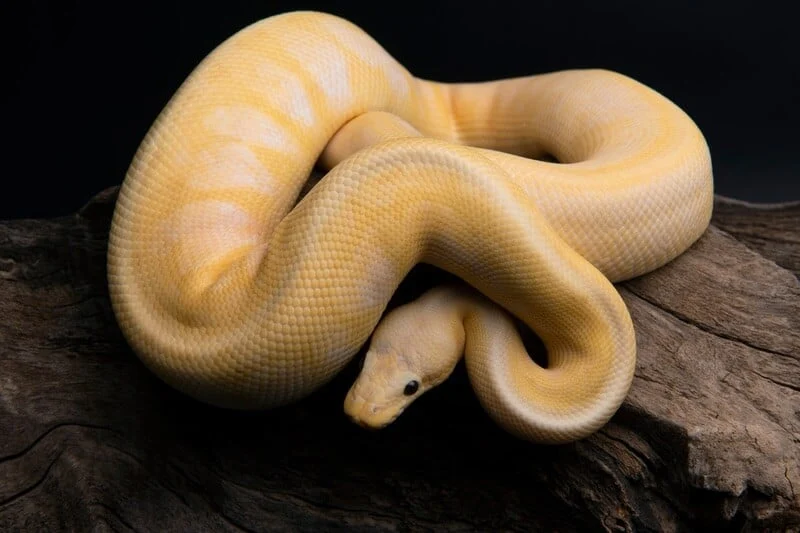
As camera technology continues to advance, researchers anticipate discovering even more bizarre and unexpected snake feeding behaviors in the coming years. Miniaturized cameras capable of being attached directly to snakes without impeding their movement are currently in development, promising unprecedented first-person perspectives of hunting and feeding events. Thermal imaging technologies are also becoming sensitive enough to document the subtle heat signatures associated with digestion, potentially revealing new insights into how snakes process their meals internally. Conservation biologists emphasize that documenting these feeding behaviors is not merely for human fascination but provides critical insights for protecting endangered snake species and the ecological roles they fulfill. With an estimated 20% of snake species currently threatened with extinction, this research takes on additional urgency as we risk losing remarkable behavioral adaptations before they can be fully understood.
From the extraordinary jaw adaptations of egg-eating snakes to the sophisticated hunting strategies of tentacled snakes, these reptiles demonstrate evolutionary ingenuity that continues to astonish scientists and wildlife enthusiasts alike. Each bizarre feeding behavior represents millions of years of natural selection, resulting in specialized adaptations perfectly suited to particular ecological niches. As we continue to document these remarkable feeding strategies, we gain not only a deeper appreciation for snake diversity but also valuable insights into predator-prey dynamics that shape entire ecosystems. While these behaviors may seem alien or even frightening to human observers, they represent the pinnacle of evolutionary refinement in predatory strategies—nature’s solutions to the eternal challenge of survival.





